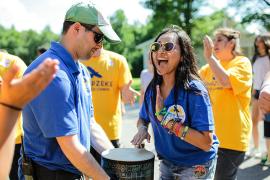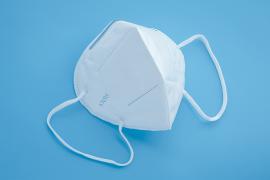As we surf from variant wave to wave, camps are realizing the fortune of low cases at camp’s opening last year may not be in the cards for 2022. Last week the American Academy of Pediatrics (AAP) reported 93,000 childhood cases of COVID-19 compared to the 9,000 reported last year at this time. Additionally, the Centers for Disease Control and Prevention (CDC) is urging indoor mask use again as red spreads across counties in the Northeast and Upper Midwest reflecting high CDC COVID-19 community levels. And like so many aspects of the pandemic, this news translates to dread in some and apathy in others — leaving many camp directors looking for the reasonable common ground balance between normal and too cautious.
From my view, there are at least four important concepts for camp directors to understand. First, COVID-19 can still threaten operations. Schools during the January Omicron wave did stay open for the most part . . . unless a dearth of bus drivers and staff made opening impossible due to illness. It behooves camps to pay attention to this experience when considering staff recruitment and training, even with minor concern for the virus’s illness profile. New variants, including BA4 and BA5 have 1) been able to reinfect those who are vaccinated and who had earlier Omicron strains and 2) are incredibly fast in their transmission. Attempting opening day with 50 percent of staff infected is a devastatingly avoidable situation with diligent planning and accessible public health interventions.
Secondly, camp directors need to understand high vaccination rates and negative rapid antigen tests do not promise a COVID-free experience. Vaccination remains the hero in this pandemic by stopping serious disease and death in the vast majority of those protected. Yet, even high vaccination rates cannot and will not stop new variants from entering and spreading in camp. Similarly, negative tests, particularly negative antigen tests, fail at significant rates to pick up new variants at early stages of the disease and sometimes not at all. Testing all who enter camp is one layer of Swiss cheese in what should be a multilayered plan to prevent transmission and identify and pull positive cases out of the community. Don’t be lulled into security by vaccination or testing alone.
Third, while COVID-19 is increasingly unavoidable in our modern lives, every long-haul diagnosis, hospitalization, and death from this virus is a tragedy. The fact that COVID-19 will likely be in camps this summer should not give camp directors license to put up the white flag and surrender. Every year for decades, we have committed ourselves to the safest camp experience possible for all in attendance — from the challenge of water safety to consistent use of helmets to reapplication of sunscreen to infectious diseases like COVID. Safety is not negotiable and continuing to avoid COVID-19 cases at camp is part of our mission.
Lastly, while many camps will not be told how to operate by public health officials, camps know what they can and should do for a healthy summer. We have all heard it for the last two years: healthy camp begins at home, travel safely, test before (and if feasible after) arrival, monitor and identify disease early with the firewalls of cohorts, outdoor air and high-quality masking to stop transmission, and use good hygiene. And above all, don’t put your head in the sand, especially early in your staff training or camp session. Better the devil you know than the one you don’t.
Laura Blaisdell, MD/MPH, FAAP, is a pediatrician, researcher and advocate. For 20 years, she has consulted in camp medicine, while serving as medical director at Camp Winnebago. She currently is vice president of Maine AAP and a founding member of Maine Families for Vaccines. Dr. Blaisdell researches parental vaccine hesitation with Maine Medical Center. Additionally, she served site director for the National Children’s Study, as chair of the Institutional Review Board (IRB) at MMC, as chief of pediatrics at InterMed, and currently is Trustee to Mercy Hospital in Portland. She is an assistant professor at Tufts University School of Medicine. She resides in South Portland, ME, with her two sons and husband, Andy Lilienthal.
Photo courtesy of Alford Lake Camp in Hope, Maine
The views and opinions expressed by contributors are their own and do not necessarily reflect the views of the American Camp Association or ACA employees.




